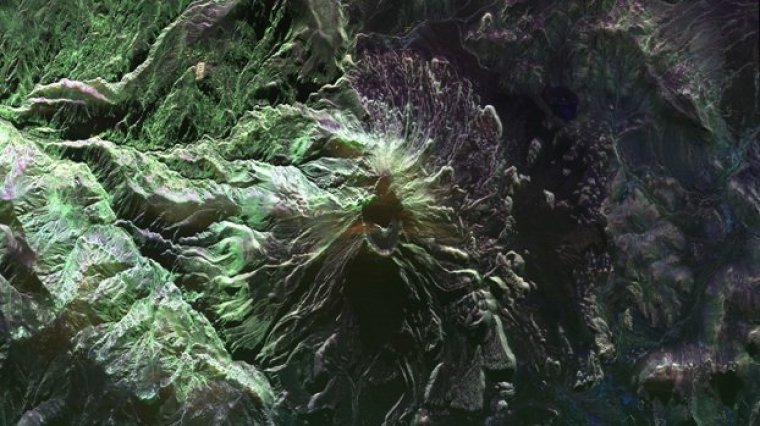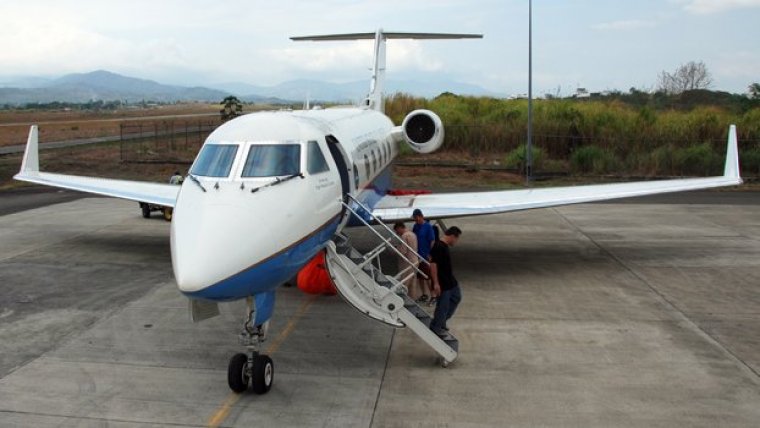| News / Space News |
NASA airborne research focuses on Andean volcanoes
NASA | MAY 28, 2014
A NASA-developed airborne imager called a synthetic aperture radar took a detailed look at volcanoes in Central and South America during an Earth science study in late April and early May 2014.

False-color image of Peru's Ubinas volcano acquired on April 14, 2014, by NASA's Uninhabited Aerial Vehicle Synthetic Aperture Radar. Image Credit: NASA/JPL-Caltech
The Uninhabited Aerial Vehicle Synthetic Aperture Radar, or UAVSAR, developed by NASA's Jet Propulsion Laboratory in Pasadena, California, was flown on NASA's C-20A. The 29-day deployment ended May 6 when the aircraft returned to its base in Palmdale, California, after 19 flights totaling 97 hours in the air.
This is the second consecutive year the UAVSAR team has conducted a campaign to study sites in Central and South America. Many of the flights imaged the Andean volcanic belt located in western South America.
NASA's C-20A features a high-precision autopilot designed and developed by engineers at NASA's Armstrong Flight Research Center, Edwards, California, allowing the aircraft to fly the same flight lines this spring as those flown in 2013 within 15 feet (4.5 meters) or closer. With the autopilot engaged, the synthetic aperture radar is able to acquire repeat-pass data that can measure land-surface changes within fractions of an inch (centimeters).
In coordination with the volcano studies, the agency's C-20A gathered data over Amazonian forests in Peru, agricultural sites in Chile and glaciers on the Chilean/Argentinian border.

NASA's C-20A aircraft crew preparing for flight from Tocumen International Airport in Panama City, Panama. Image Credit: NASA/Armstrong Flight Research Center
YOU MAY ALSO LIKE




